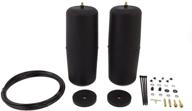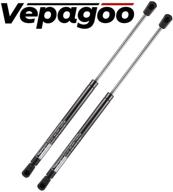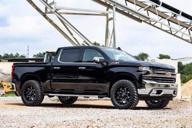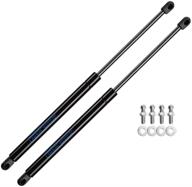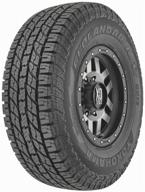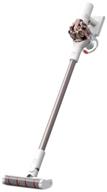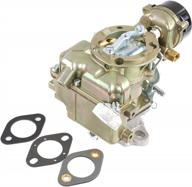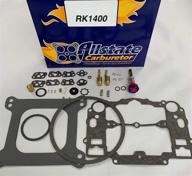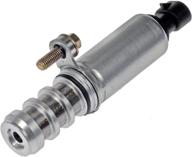Fuel Injectors: Types, Benefits, and How to Choose
Fuel injectors are a crucial component of a vehicle's fuel delivery system. They atomize and deliver precisely metered amounts of fuel into the intake manifold to match the engine's air flow and load demands. Upgrading to higher performance injectors can improve power, fuel economy, drivability, and emissions.
Types of Fuel Injectors
- Port Fuel Injectors - Mounted in the intake manifold and spray fuel near the intake valves.
- Direct Injectors - Mounted in the cylinder head and spray fuel directly into the combustion chamber.
- Sequential Injectors - Open and close individually based on engine demand.
- Batch Injectors - Open and close in groups based on engine load.
Benefits of Upgraded Injectors
Some key benefits of installing higher flowing fuel injectors include:
- Increased horsepower and torque output
- Improved throttle response
- Better fuel atomization for more complete combustion
- Allows running more aggressive camshaft profiles
- Supports more consistent air/fuel ratios when adding forced induction
How to Choose Fuel Injectors
When selecting new fuel injectors, you need to consider:
- Fuel Type - Gasoline, diesel, ethanol, etc.
- Injector Flow Rate - Measured in lb/hr or cc/min.
- Fuel Pressure - Higher pressure allows smaller injectors.
- Impedance - Should match your vehicle's injection system.
- Number of Injectors - Engine cylinder count.
Work with a performance shop to match the injector size to your specific power goals. Proper sizing, placement, and tuning are crucial to maximizing performance and drivability.
Fuel Pumps: Purpose, Types, and Replacement Tips
The fuel pump is a critical component that supplies pressurized fuel from the gas tank to the engine. Understanding the different types of fuel pumps and when to replace them can help keep your vehicle running properly.
Purpose of the Fuel Pump
- Draws fuel from the tank and pushes it to the engine under pressure
- Maintains consistent fuel pressure for smooth engine operation
- Designed to withstand exposure to gasoline and deliver flow rates to match engine demand
Types of Fuel Pumps
| Type | Description |
|---|---|
| Mechanical | Driven by the camshaft or crankshaft by a pushrod |
| Electric | Powered by the vehicle's electrical system |
| In-Tank | Mounted inside the fuel tank |
| In-Line | Mounted between the tank and engine |
When to Replace a Fuel Pump
Common signs that indicate a failing or faulty fuel pump:
- Difficult starts or stalling after starting
- Sputtering or loss of power under load
- Check engine light with low fuel pressure code
- Whining noise from pump
- Excessive fuel consumption
Periodic fuel pump replacement every 60-100k miles can prevent unexpected failure. Always use OEM or high quality replacement pumps.
Another interesting products
Carburetors: How They Work, Tuning, and Troubleshooting
Carburetors were the dominant fuel delivery system for most vehicles before electronic fuel injection became the preferred method. Understanding how carburetors function and how to tune them properly is key to keeping older vehicles running right.
How Carburetors Work
Carburetors mix air and fuel through the three key components:
- Venturi - Air flows through a narrow throat, creating low pressure.
- Jets - Fuel is drawn in through jets of varying sizes.
- Throttle Plate - Controls air volume into the engine.
This relatively simple mechanical system relies on air velocity and vacuum to deliver the correct air/fuel ratio.
Tuning and Adjusting a Carburetor
Some common carburetor adjustments include:
- Air/Fuel Mixture - Turning the screw adjusts the mixture.
- Idle Speed - Controls idle RPM with a throttle stop screw.
- Float Level - Calibrates fuel flow to the jets.
- Accelerator Pump - Tunes off-idle response.
Both the air/fuel mixture and idle speed require synchronization across multiple carburetors.
Troubleshooting Carburetor Issues
Some common carburetor problems and solutions:
- Hard Starting - Clean jets and adjust mixture screws.
- Rough Idle - Adjust throttle stop screw and idle mixture.
- Hesitation/Bogging - Inspect floats, accelerator pump and jets.
- Flooding - Check floats and needle valves for sticking.
- Backfiring - Indicates lean mixture, readjust air/fuel screws.
In many cases, a thorough carburetor cleaning and rebuild with a kit is needed to restore proper functioning.
Fuel Pressure Regulators: Function and Failure Signs
The fuel pressure regulator is a vital fuel system component that controls fuel pump pressure to maintain optimal fuel delivery. Recognizing when they fail helps prevent performance issues.
Fuel Pressure Regulator Function
- Maintains consistent system pressure for optimal fuel flow
- Returns excess fuel to the tank once pressure reaches the preset limit
- Common preset pressures: 30-95 psi for gasoline, 5-30 psi for diesel
- Uses a spring-loaded diaphragm or valve and vacuum reference
Signs of Fuel Pressure Regulator Failure
Problems with fuel pressure regulators may produce these symptoms:
- Difficult starting or stalling after starting
- Rough idle, hesitation, or loss of power
- Black smoke from exhaust indicating rich condition
- Fuel odors from vented vapor
- Fuel leaks around the regulator housing
- Check engine light for out of range fuel trims or oxygen sensor codes
Testing Fuel Pressure
To diagnose, test fuel system pressure with a gauge:
- Install pressure gauge on the fuel rail or line
- Observe pressure at idle, under load, and with vacuum line disconnected
- Compare readings to specified values
- Abnormal pressure indicates faulty regulator
When diagnosed, replace the regulator with the factory part and reset fuel trims. This will restore proper performance.
Fuel Filters: Importance of Changing and Maintenance
Fuel filters play a crucial role in protecting vehicle fuel systems from contaminants. Performing regular filter changes and maintenance is key to engine performance and longevity.
Purpose of the Fuel Filter
- Removes dirt, rust, and other particles from fuel
- Prevents contaminants from clogging injectors or carburetors
- Traps water to avoid corrosion in system
- Often located in-line between tank and engine
Symptoms of Clogged Fuel Filter
Warning signs a filter needs replacement:
- Difficult starting or stalling after starting
- Whining or straining from fuel pump
- Reduced power and performance
- Hesitation or sputtering at high speeds
- Increased fuel consumption
Recommended Fuel Filter Change Intervals
| Vehicle Type | Change Interval |
|---|---|
| Modern gasoline vehicles | Every 30,000 - 60,000 miles |
| Diesel powered vehicles | Every 15,000 - 30,000 miles |
| Classic Cars | Every 2 Oil Changes or 1 Year |
Shorter intervals under severe service conditions. Always use quality OEM or aftermarket replacements.
Fuel Filter Maintenance Tips
- Add fuel stabilizer at oil changes to prevent algae growth
- Top off the tank to minimize condensation
- Install a pre-filter if off-roading
- Check lines and connectors for leaks during service
Proper fuel filter maintenance prevents expensive damage and keeps your vehicle running smoothly.
Similar products
Fuel Lines: Materials, Routing, Inspection and Leaks
Fuel lines play a critical role in safely containing and transferring gasoline or diesel from the tank to the engine. Understanding line materials, routing, inspection tips, and detecting leaks prevents issues.
Fuel Line Materials
- Steel - Durable but not very flexible. Prone to rust over time.
- Rubber - Flexible but degrades faster than other materials.
- Aluminum - Combines durability with flexibility.
- Stainless Steel - Best corrosion resistance but more expensive.
- Nylon - Increasingly common flexible plastic tubing.
Fuel Line Routing
- Secure lines away from heat sources like the exhaust.
- Use grommets when passing through sheet metal to prevent chafing.
- Avoid tight bends or kinks that restrict fuel flow.
- Anchor with clips or retention straps to prevent vibration.
Inspecting Fuel Lines
- Check for damage, cracks, bulges, or leaks.
- Ensure connections are tight with no seepage.
- Confirm lines are not abraded from contact with other components.
- Check condition of grommets and isolators.
Signs of a Fuel Line Leak
- Fuel odor present in cabin or near lines.
- Wet spots or drips near lines, connectors, or tank.
- Fuel puddles under vehicle after parking.
- Reduced fuel economy as fuel is lost.
Always promptly replace any leaking fuel lines and components. Leaks present a major fire hazard and can lead to engine damage if not corrected.
Top products in 🛢️ Fuel System
Fuel Tanks: Capacity, Materials, Cleaning and Modifications
The fuel tank stores and supplies gasoline or diesel to the engine. Its capacity, construction, and condition directly impact vehicle range and performance.
Fuel Tank Capacity
- Ranges from 10 to over 40 gallons for passenger vehicles
- Trucks and SUVs have tanks from 20 to 50+ gallons
- Higher capacity equals greater range between fill-ups
- Aftermarket tanks are larger to increase range
Fuel Tank Materials
- Steel - Durable but heavy and prone to rust over time.
- Aluminum - Lighter weight but more expensive. Some corrosion risks.
- Plastic - Most common today. Resists corrosion but can be punctured.
Cleaning Fuel Tanks
- Remove old gasoline and sediment buildup.
- Use a solvent tank cleaner fluid and let soak.
- Rinse thoroughly with water, remove filters/baffles to clean behind.
- Allow to dry fully before reinstalling and filling.
Fuel Tank Modifications
- Larger custom aftermarket tanks for extended range.
- Aluminum or plastic tanks to replace rusted steel.
- Added baffles help control fuel slosh.
- Sumps and collector cups trap sediment.
- Internal foam rings prevent explosion risk.
Properly maintaining and modifying fuel tanks helps deliver optimal fuel supply and prevents potential hazards from damaged or corroded tanks.
Benefits of Amazon Prime for Fuel System Shoppers
For those who frequently purchase parts and upgrades for their vehicle's fuel system, an Amazon Prime membership can prove very useful. Here are some of the key benefits Prime offers fuel system shoppers:
Free Two-Day Shipping
Prime members get free two-day shipping on millions of eligible items. This means you can get fuel injectors, pumps, lines and other parts delivered right to your door in just two days without paying extra for shipping. This can be extremely convenient when you need to quickly order something to complete a repair or upgrade.
Free Release-Date Delivery
When you preorder eligible items, you can get new fuel system product releases delivered on their official release date at no extra cost. This allows you to get your hands on the latest performance parts and accessories as soon as they hit the market.
Access to Prime-Only Deals
Amazon routinely offers special discounts, sales, and deals exclusively for Prime members. This allows you to save money on fuel delivery components, octane boosters, injector cleaners, and other products related to your vehicle's fuel system.
Prime Vehicle Savings
As a Prime member, you can save up to 15% off car parts and accessories sold directly by Amazon. You also get 5% back on eligible auto parts purchases at Advance Auto Parts, Pep Boys, and other partnering providers. These perks can directly reduce what you spend on fuel system upgrades and maintenance.
Overall, the fast free shipping, exclusive deals, and other benefits make Amazon Prime a very useful subscription for those who regularly shop for fuel system parts and accessories. The savings on shipping costs alone often makes the membership worthwhile for frequent shoppers.
What Are The Most Common Problems With Fuel Systems And How To Solve Them??
Fuel system problems can cause a variety of issues with your vehicle's performance. Here are some of the most common problems and how to solve them:
- Bad or clogged fuel injectors: Fuel injectors can become clogged or fail over time, leading to poor engine performance. They can be cleaned or replaced to solve the problem.
- Clogged fuel filter: A clogged fuel filter can restrict fuel flow to the engine, causing it to run poorly or not at all. Replacing the fuel filter can solve this problem.
- Clogged or leaking fuel lines: Fuel lines can become clogged or leak over time, leading to dangerous driving conditions. Regular fuel system maintenance can help prevent these problems.
- Malfunctioning fuel pump: A malfunctioning fuel pump can cause a variety of problems, including poor engine performance and stalling. Replacing the fuel pump can solve this problem.
- Using the wrong type of fuel: Using the wrong type of fuel can cause performance loss, misfiring, knocking, and even backfiring. Always use the recommended octane for your vehicle.
- Fuel system components damaged or not working correctly: Fuel system components such as hoses, pipes, and electrical connectors can become damaged or not work correctly over time. Regular inspections and testing can help identify and solve these problems.
What Are The Signs Of A Clogged Fuel Filter??
A clogged fuel filter can cause a variety of problems with your vehicle's performance. Here are some signs that your fuel filter may be clogged:
If you are experiencing any of these symptoms, it's important to have your fuel filter checked and replaced if necessary. Regular fuel system maintenance can help prevent these problems from occurring in the first place.
What Are The Causes Of A Clogged Fuel Filter??
A clogged fuel filter can cause a variety of problems with your vehicle's performance. Here are some of the causes of a clogged fuel filter:
Regular fuel system maintenance can help prevent these problems from occurring in the first place. If you are experiencing any of the symptoms of a clogged fuel filter, it's important to have your fuel filter checked and replaced if necessary.





